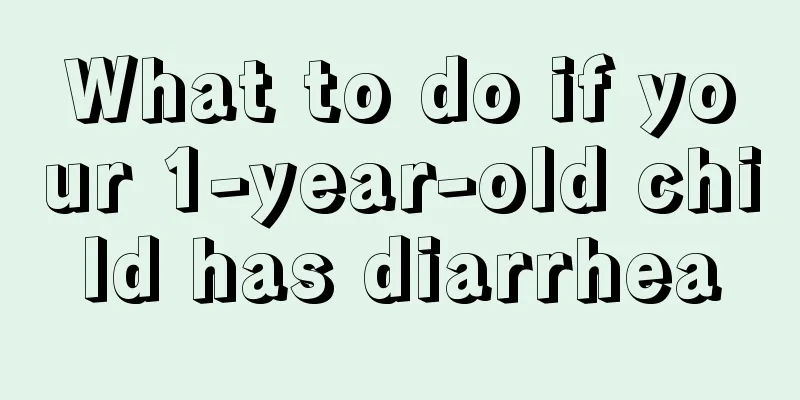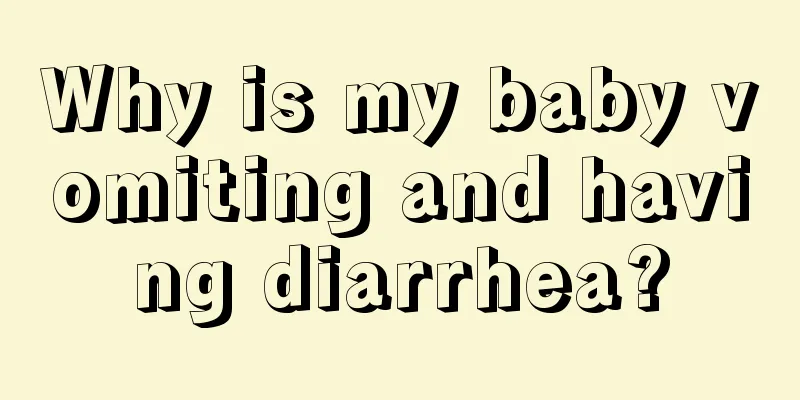What to do if your baby is anemic at ten months old

|
Babies' physical resistance is always weaker than that of their parents, especially when the children are still growing. Therefore, if you don't pay enough attention to your baby, he or she will develop some diseases. Among them, many October babies are suffering from anemia. Everyone knows that anemia is a disease that requires slow treatment and careful care before it will gradually get better. But there are still many people who don't understand it very well, so I want to ask what to do if a baby is anemic at ten months old? 1. Supplement iron-containing foods, such as iron-fortified infant formula, iron-containing rice flakes or iron-containing vitamin drops, etc. At the same time, you should also supplement with foods rich in vitamin C, such as tomato juice, vegetable puree, etc., to enhance iron absorption. In addition, when the baby starts eating solid food, he should also be fed more foods containing high levels of iron, such as egg yolks, rice porridge, vegetable porridge, etc., but sugar should be avoided because it will hinder the absorption of iron. 2. Always pay attention to your baby's physical condition. If necessary, conduct a hemoglobin test on your baby, because babies with mild anemia cannot show it from the outside. If the baby's hemoglobin is too low, it means that he has anemia and he should supplement iron in time and eat foods high in iron. 3. Regarding the addition of iron-fortified diet, full-term infants should start from 4-6 months (no later than 6 months), and premature infants and low-birth-weight infants should start from 3 months. The simplest method is to add ferrous sulfate to milk or complementary food. For breast-fed infants, add 1-2 servings of iron-containing cereals per day. Ferrous sulfate drops can also be used alternately. The dosage of pure iron for full-term infants should not exceed 1 mg/kg/day (2.5% FeSO4 0.2 ml/kg/day), and for premature infants it should not exceed 2 mg/kg·d. The maximum total daily dose is 15 mg, and ultrasound should not be used for a maximum of 1 month for home use to avoid iron poisoning. 4. If bottle-fed babies are fed milk without iron after 6 months, the total amount should not exceed 750 ml, otherwise the intake of iron-containing diet will be squeezed out. 5. For children and adults, it is best to add 13-16 mg of iron to each pound of flour. The diet in rural my country is mainly based on cereals and starches. Hookworm disease is prevalent in some places and must be taken seriously. At the same time, attention should be paid to increasing the meat diet as much as possible, because even if iron is added to cereals, the absorption amount is not as good as that of meat products. Because the baby is relatively young, all aspects of his body are still developing at ten months. Therefore, some drug treatments are not suitable, so I will only introduce to you the dietary methods of treating anemia. This is convenient and safe to do at home. But no matter what, parents still need to have a detailed understanding to help their children recover. |
<<: What to do with cervical lymphadenopathy in children
>>: What to do if your baby is zinc deficient?
Recommend
How to treat small red pimples on children’s faces?
Recently, I have seen many mothers asking online ...
What to do if your five-month-old baby has a cold and stuffy nose
It is common for newborn babies to have a cold an...
What to do if children are allergic to pollen
Many people are allergic to pollen since childhoo...
What are three ways to change a child’s carelessness?
When tutoring children with homework, parents oft...
What are the physical methods of cooling down a baby's fever?
Children's bodies are not as resistant as adu...
Can alopecia areata in children heal itself?
You have heard a lot about hair loss in middle-ag...
How to treat lymph nodes in babies?
Many babies have problems with their bodies, so t...
Is enema good for treating fever in children?
When a child has a fever, many mothers will choos...
What to do if the baby has a big gap between his front teeth
When many babies start to grow teeth, there is a ...
Causes and symptoms of neurogenic urinary frequency in children
Maybe you are not too familiar with the symptoms ...
What's wrong with the pimples on the baby's body?
In the daily life of caring for newborns, parents...
What should I do if my one and a half year old baby walks unsteadily?
Parents certainly hope that their babies can grow...
What should I do if my 3-year-old baby coughs?
Coughing is not a disease, but once it starts, it...
Causes and treatment of night cough in children
In fact, coughing is also divided into time perio...
Treatment of inguinal hernia in baby girls
In fact, people who have just started to become p...









